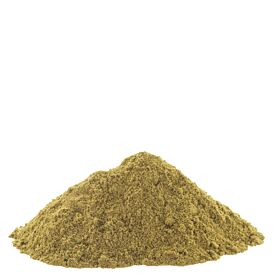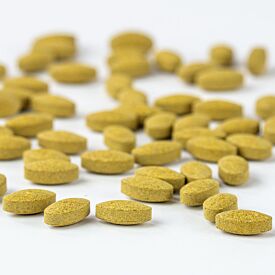How to Recognize Lymph Congestion
As the cold and dampness of winter melts away to the warmth of spring, our bodies also mirror these changes in nature. Being familiar with the movements of kapha (most prevalent within the plasma and lymphatic system or rasa dhatu) will enable us to support its proper transformation and elimination at the dawn of spring. This helps to set the body up for optimal wellness in the seasons to come. On the contrary, a failure to do so can take us down a vicious cycle of constantly struggling to eliminate excess kapha.
Why Kapha, Why Lymph, and Why Spring
Even in the most desert parts of the country, winter is marked with relatively greater dampness and cold with at least spurts of snow, ice, or cold rain. This creates a like reaction within the body to accumulate kapha, particularly avalambaka kapha (kapha housed in the respiratory system). We feel the results as we blow our nose and cough our way through winter.
The kapha from these locations slowly makes its way to the stomach, building the subtype of kapha, kledaka kapha. Kledaka kapha is the protective juices and mucous that lines the stomach. It then flows with peristalsis into the intestines, where it feeds and transforms into rasa dhatu.1
Thus, rasa dhatu will swell as more avalambaka kapha is produced, leading to a state of increased rasa (rasa dhatu vruddhi). The progression only increases during spring as avalambaka kapha begins to melt its way into rasa dhatu. Excessive amounts of kapha can overwhelm the digestive capacity of rasa dhatu. In that case, what remains is an unprocessed and inert form of kapha (poshaka kapha) that lingers around in the rasa dhatu.
It is likely that just about everyone has some elements of rasa dhatu vruddhi during spring, since we are all susceptible to climate changes and we all tend to indulge (even just a little bit) through the holidays. The sweet and salty tastes predominate rasa dhatu, and, therefore, those delicious sweets and savory dishes of the holiday season only gave the climate changes a boost in its impact on the body. And, like our animal neighbors, we like to be less active and hibernate in our cozy homes during cold months and sleep more during longer nights. Kapha loves inertia as it gives time to settle and build.
10 Signs of Lymph Congestion
The body is very telling of stagnation and congestion within the lymphatics. Use the following signs, in no particular order, to help guide your questioning and examination.
- Puffy and crusty eyes. Blocked sinuses make it difficult for the tear ducts to drain away the lubricating fluid over the eyes. It also leads to venous congestion in the face. The result is waking up with a swollen and puffy face, and, for some, that appearance lasts throughout the day.
- Phlegm. Lingering phlegm in the back of the sinuses and throat can be quite bothersome. Like puffy eyes, it is often more pronounced in the morning, making it an easy sign to miss without further questioning.
- Repeated congestion and cough.2 The process of kapha to lymph described above can also happen in reverse as the body attempts to eliminate the dosha by bringing it back to its home. Recurrence of congestion and cough without clear signs of infection is one manifestation of that process.
- Poor digestion (low agni).2 Both kapha and rasa are wet and cold—the perfect antidote to agni. The accumulation of kapha in the stomach and rasa throughout the body will douse agni. Look for these signs and symptoms to identify low agni.
- Poor appetite.2 The result of poor digestion can be a poor appetite. A stomach that is constantly satiated from high levels of kledaka kapha can also cause a poor appetite.
- Sluggishness. High kapha plus low agni leads to a drop in energy level. The higher levels of poshaka kapha coursing through rasa dhatu can create a sensation of heaviness throughout the day.
- Swelling.2 As rasa dhatu grows, the plasma can leak into the tissue leading to swelling. Since kapha is dense and heavy, pay particular attention to the feet and legs.
- Slightly higher blood pressure. A subtler sign of rasa dhatu expansion is finding that the blood pressure reading is slightly higher despite it still being in a normal range. There are many reasons for variations in blood pressure, but one could be more fluid in the circulation.
- Clogged channels.2 If you find that other channels in the body are blocked, such as the reproductive channels or blood vessels, consider high levels of poshaka kapha as the clogging factor.
- Excessive salivation.2 High rasa dhatu can manifest in other fluid filled areas of the body, such as the mouth. Ask about drooling in the sleep or a mouth that is excessively wet.
As the transition into spring occurs, pay close attention to these signals. The solutions to decongesting and draining excessive plasma and lymph from the body (to come in the second part of this series) during this opportune time can set your client up for a year of optimal wellness and avoid a year of fighting poor agni and high kapha.
References
1 Lad, Vasant. Textbook of Ayurveda: Fundamental Principles. The Ayurvedic Press. Albuquerque, NM. Pp 65-71
2 Lad, Vasant. Textbook of Ayurveda: A Complete Guide to Clinical Assessment. The Ayurvedic Press. Albuquerque, NM. Pg 242.










